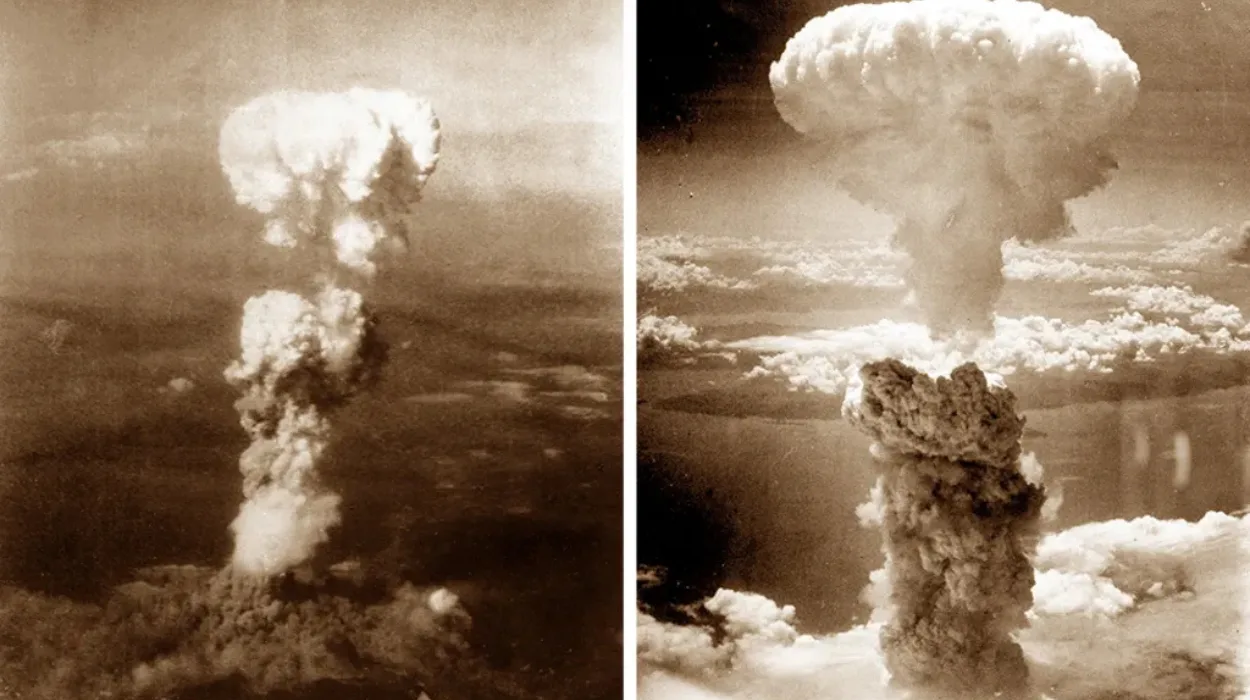The dropping of atomic bombs on Hiroshima and Nagasaki that occurred in August 1945 is an important and disastrous turning point in human history. Besides ending World War II, these bombs gave rise to a new era of nuclear integration, shifted currents of international affairs as well, and subjected humankind to the fear of unprecedented amounts of mass demise.
This blog explores in depth the historical background, the chronology of events leading to the bombings, the short- and long-term impact of the event, the long-term effects on the human psyche, and how the event continues to linger as a legacy and a debate that continues shaping world discourse to date. The Pacific War still raged in the second half of World War II.
When were the atomic bombings of Hiroshima and Nagasaki?
It was also the terrifying firebombing campaign of the United States Army on the Japanese, as is reflected in the infamous March 1945 bombing of Tokyo alone, when no less than 80,000 Japanese were killed on a single night. Unlike the Allies, which already had an unconditional surrender of Japan by Nazi Germany, this stance was caused by a desire not to lose the emperor and to avoid occupation.
In such a stalemate, the then US president Harry Truman, having only become acquainted with the success of the Manhattan Project to develop atomic bombs, had to face the horrifying prospect of a costly ground invasion of Japan, dubbed Operation Downfall, which was projected to inflict tens of thousands, perhaps millions, of wounds on the Allies and Japanese. Truman also used the dropping of atomic bombs to prove to the Soviet Union, which declared war on Japan early in August 1945, the strength of the United States and that the war would end promptly and without additional losses of lives among the Allies.
The effects of atomic bombing on Hiroshima and Nagasaki
The atomic bomb was one of the best-kept secrets during the time of World War II. It and the personnel who made it were the work of thousands of scientists aided by a project referred to as the Manhattan Project and overseen by J. Robert Oppenheimer, the director of the Trinity Test, which on July 16, 1945, was successful in testing a plutonium weapon in the state of New Mexico. In July, the US had already assembled two bombs, the plutonium-239, called Fat Man, and the uranium-235, called Little Boy.
The important attacking cities that were selected were Hiroshima, Kokura, Niigata, and Nagasaki; many of these sites were selected because of their military targets and morale importance. The Little Boy bomb dropped out of the Enola Gay, a B-29 airplane, at 8:15 am on 6th August 1945, and fell on Hiroshima. The explosion of the bomb was recorded at an 580 meters and an energy production of about 15 kilotons of TNT. The sound waves of the city moved with the highest speed since the temperatures caused by the fireball were approximated between 4,000°C and 7,000°C.
The aftereffects of the atomic bomb on Hiroshima and Nagasaki
Due to the US atomic bombing of Hiroshima and Nagasaki, there was the destruction of nearly 70 percent of all the buildings were destroyed or severely damaged. About 78,000-80,000 of the 350,000 population of the city died instantly. By the close of the year 1945, it is estimated that 140,000 people died due to radiation sickness and injuries, and about 38,000 of them were children. 90% of the doctors and nurses were killed or injured, and most of the hospitals ceased operation, a condition that destroyed the medical system. Several of the survivors with serious burns, thirst, radiation poisoning, and extreme psychological distress hobbled across the ruined city. An increase in pollution occurred as there was black radioactive rain.
Reasons for the atomic bombing of Hiroshima and Nagasaki
After making a diversion weather-related flight to the initial target, Kokura, the United States dropped a more advanced plutonium-based bomb, Fat Man, three days after the first incident (August 9, 11:02 a.m.) over the city of Nagasaki.
- The bomb was detonated at a shy of 500 meters. Though the terrain of the city contributed to restraining the carnage, over 27,000 people were killed on the spot. Approximately 74,000 people had died by the end of 1945, and final death tolls in later decades surpassed 80,000 as a result of radiation exposure and injuries.
- Fires destroyed factories and neighborhoods; the majority of buildings within a two-mile radius were destroyed, and many citizens, including women and children, were killed or seriously injured.
- The decisive blows were delivered by the two bombings, the Soviet declaration of war, and the invasion of Japanese-occupied territory.
- On August 14, the sharply divided Japanese cabinet finally agreed to unconditional surrender.
- For the first time, the majority of Japanese civilians heard Emperor Hirohito speak to the nation. He stated that to rescue the country, they must “endure the unendurable.” On September 2, 1945, Japan surrendered, officially ending World War II.
Human impact: Suffering, survival, and testimony
Survivors were left with severe burns and blindness, acute radiation syndrome, irreparable injuries, and inconceivable psychological trauma, which, as a medical reality, is nearly unimaginable. The price was not only physical but also very, very social and psychological, as children were left to be orphans, families were devastated, and neighborhoods were flattened. Leukemia cases in the area increased due to radiation exposures, and many decades later, the number of thyroid, breast, lung, and other cancer rates remained high. Increased rates of miscarriages and infant mortality, and a greater likelihood of long-term health problems among surviving children were witnessed among pregnant women. Trauma and stigmatization of the people who survived would still take place, as well as prejudice and medical suffering being strongly connected.
The testimonies give an immeasurable insight into the human experience that is behind the figures. The tragedies of half a dozen survivors, of a physician, of a widow, of a student, and others, were eternally spoken in the memory of John Hersey in 1946 in his film Hiroshima, which brought out the horror and also the perseverance of ordinary citizens confronted with an extraordinary catastrophe.
US Rationale Behind the Hiroshima and Nagasaki Bombings
The atomic bombs are still considered to be one of the most debatable historical events during a war.
- The bombs, as their supporters argue, compelled the Japanese to surrender within the shortest time, hence saving more lives as compared to the prolonged fight and full invasion.
- The attacks made nuclear weapons one of the important aspects of international military planning.
- Hiroshima and Nagasaki are presently the global cultural centers of nuclear disarmament and peaceful life. The legacies of the deceased and wounded who did not die in vain inform calls for a nuclear-free world since there exist annual monuments, museums, survivor testimonies, and artistic depictions of the dead and wounded.
Impact of the Hiroshima and Nagasaki Bombings
- Critics then say that the bombs amounted to gratuitous violence and a violation of the norms and ethics of warfare, given the number of civilians killed, and that Japan was at the point of surrendering.
- The Cold War resulted in the development of thousands of warheads via the nuclear arms race between the US and the USSR, and the nuclear weapons were far more destructive than the ones that were utilized in 1945. As a result of nuclear fears, the anti-nuclear movement emerged, geopolitics changed, and the non-proliferation treaties were concluded, and all these have affected international relations till nowadays.



